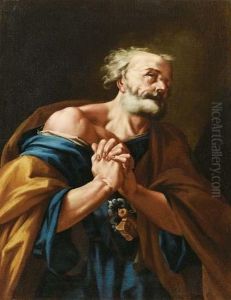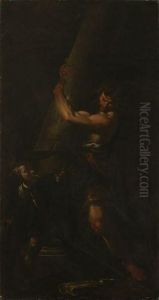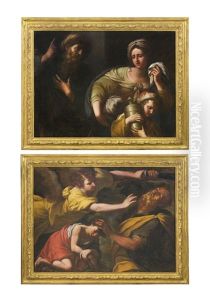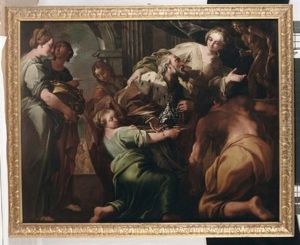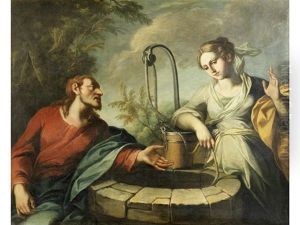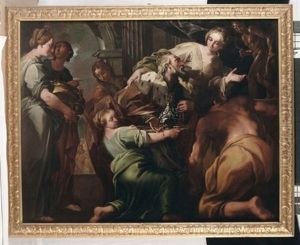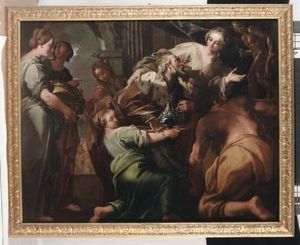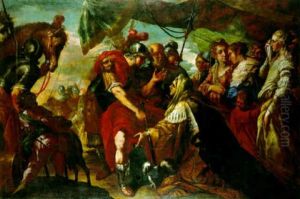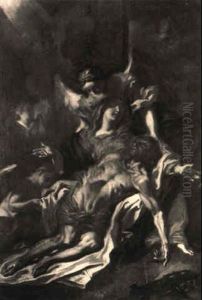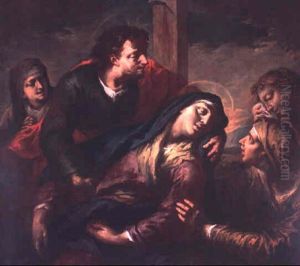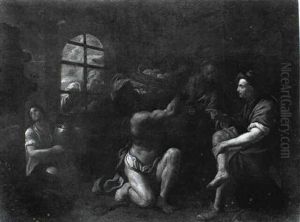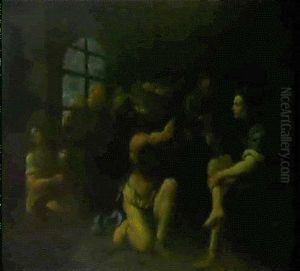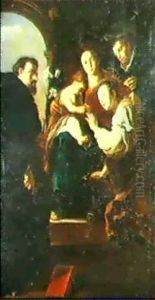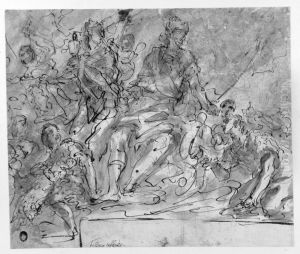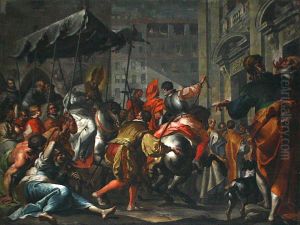Filippo Abbiati Paintings
Filippo Abbiati was an Italian painter of the Baroque period, born in 1640 in Milan. His contributions to the art world are recognized through his numerous religious-themed works, frescoes, and altar pieces that largely adorned churches and institutions in Milan and surrounding Lombard regions.
Abbiati received his initial artistic training from Antonio Busca, who was a lesser-known but nonetheless influential artist in Milan during that time. Abbiati's early work was heavily influenced by his mentor, but as he matured as an artist, he began to develop his own distinct style. His painting technique was characterized by strong, dramatic lighting and a rich color palette, which was typical of the Baroque movement that emphasized grandeur and emotional intensity.
Throughout his career, Abbiati worked on several significant projects. He was known for his collaborations with other artists, such as the painter Federico Bianchi, with whom he worked on the decoration of the ceiling of the church of San Giuseppe in Milan. One of his most famed works is the frescoes in the Benedictine monastery of San Paolo Converso, Milan, which showcase his mastery in handling large-scale compositions and his capability of infusing his religious subjects with a sense of life and dynamism.
Abbiati's religious paintings often depicted scenes from the life of Christ, the Virgin Mary, saints, and angels. These works were not only expressions of his own devout faith but also served as instruments of religious education and inspiration for the faithful during a period when the Catholic Church was reaffirming its doctrines through art as part of the Counter-Reformation efforts.
Abbiati's career was largely confined to Northern Italy, where he enjoyed patronage from many important religious and noble personages of his time. Despite having a successful career in Milan, his work did not spread far beyond his local area, and as a result, he did not gain the same level of international fame as some of his contemporaries like Caravaggio or Rubens.
Filippo Abbiati passed away in 1715 in Milan, leaving behind a rich legacy of Baroque art that continued to influence and inspire Italian artists after his death. His work remains an important part of Italy's cultural heritage, particularly in and around Milan, where his art can still be admired in various churches and collections.
